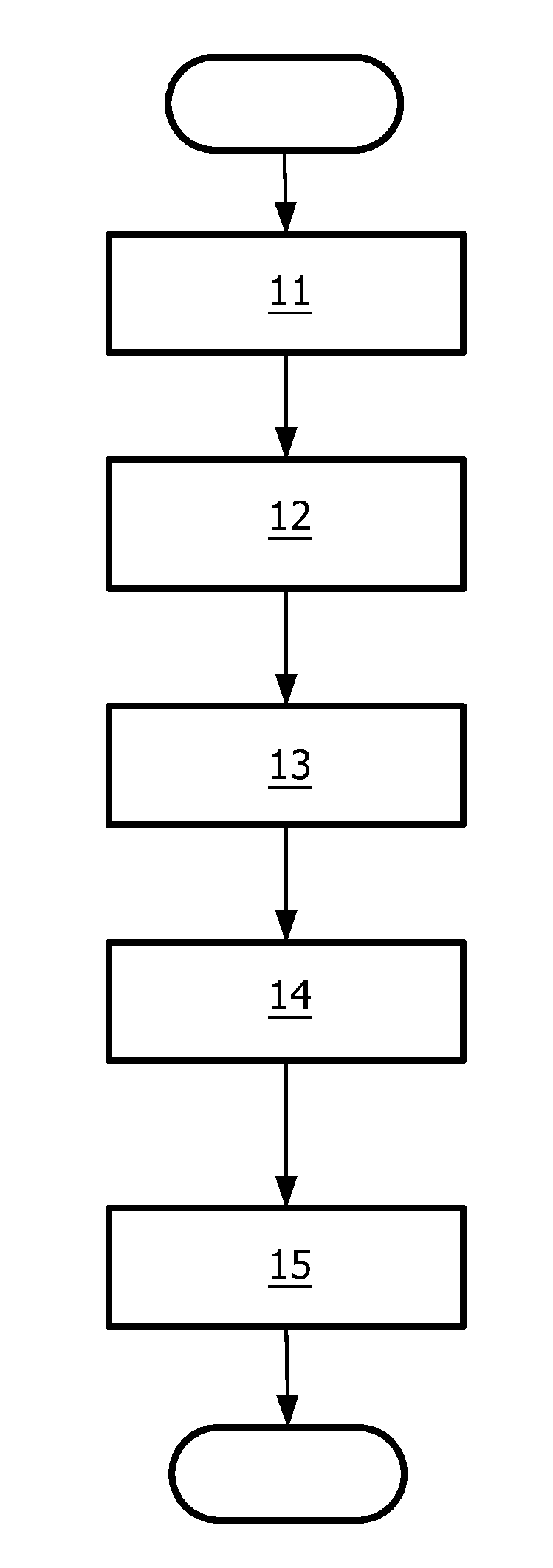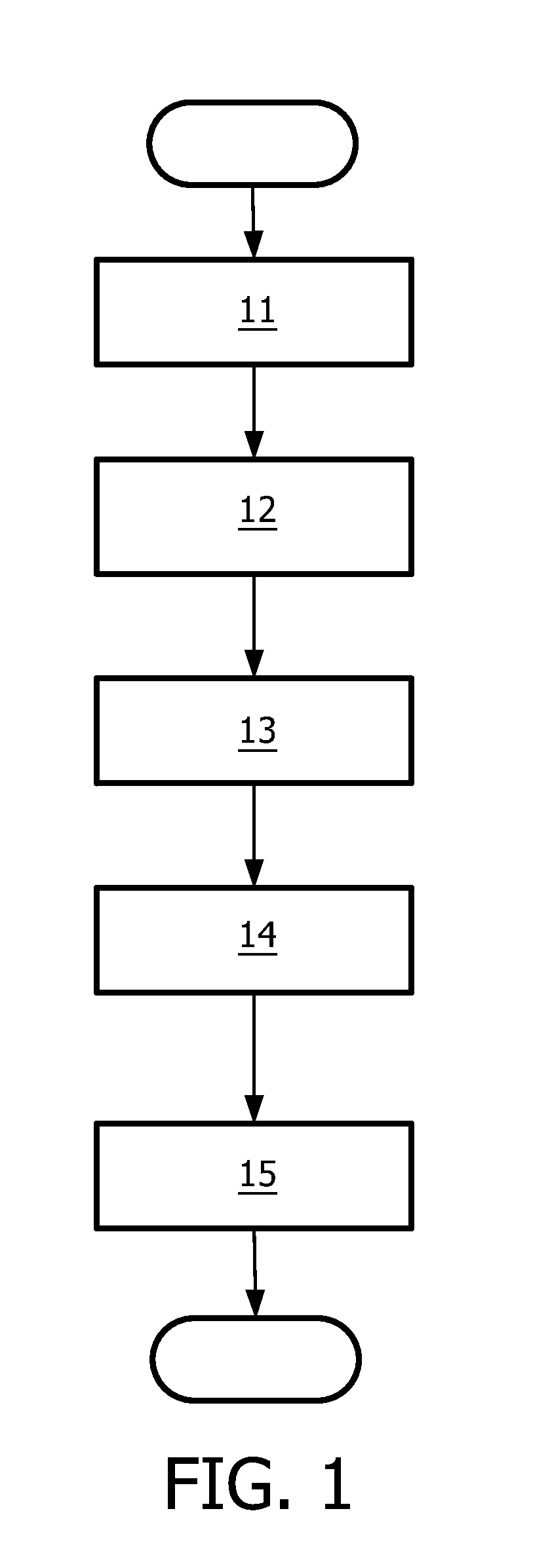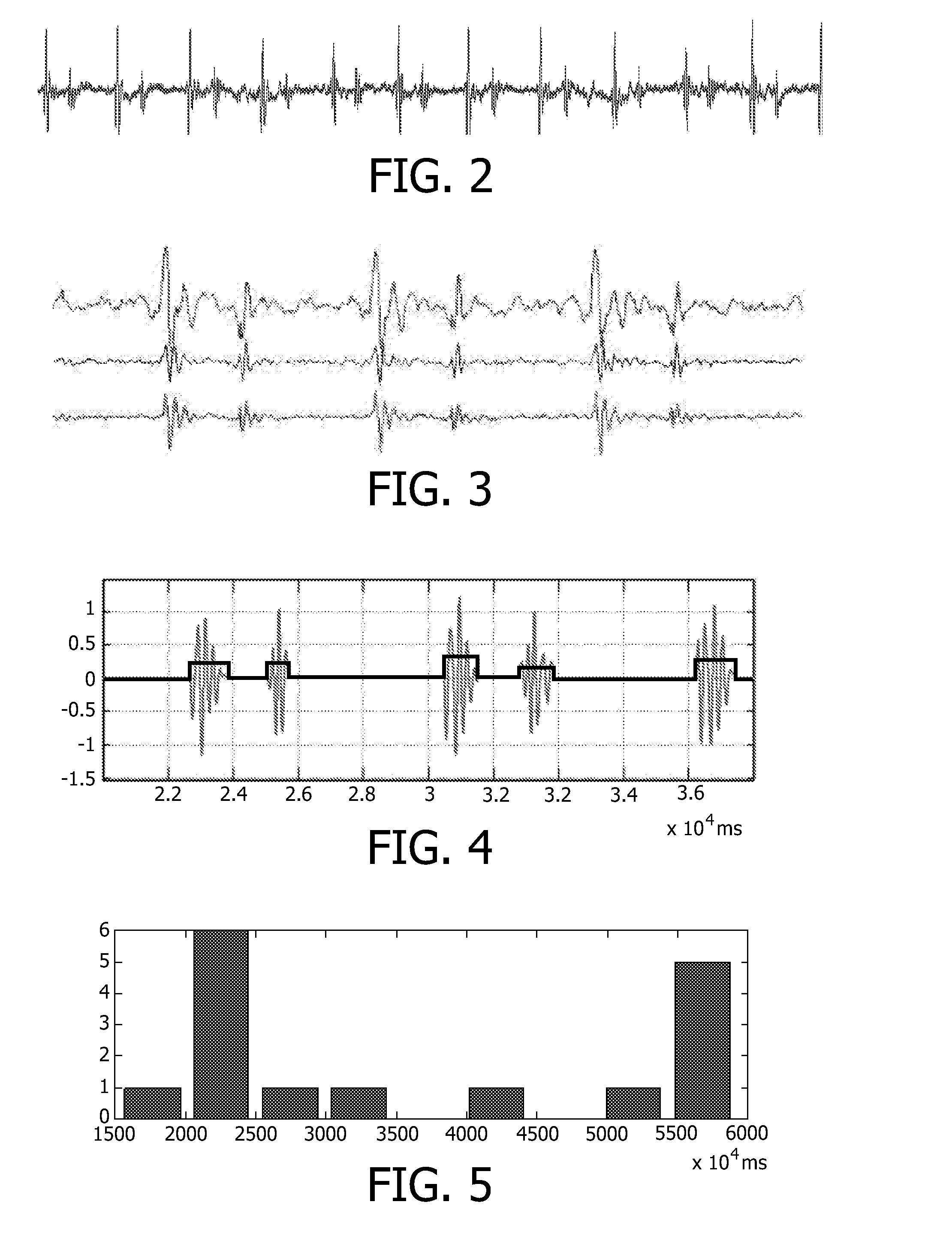Method and system for processing heart sound signals
a heart sound and processing method technology, applied in the field of sound signal processing, can solve the problems of difficult for people to accurately make a diagnosis of abnormal heart sound, and the current digital stethoscope cannot give very intelligent indications for helping, so as to achieve accurate information for peopl
- Summary
- Abstract
- Description
- Claims
- Application Information
AI Technical Summary
Benefits of technology
Problems solved by technology
Method used
Image
Examples
first embodiment
[0050]the segmenting step 12 may comprise the steps of:[0051]filtering the heart sound signal by a band-pass filter for selecting a wave band of the heart sound signal, wherein the wave band is a predefined frequency range. The filtering step is intended to cut-off frequency 10-100 Hz from the heart sound signal for selecting the wave band within the predefined frequency range. The predefined frequency range is predefined according to the energy of a heart sound signal, since some segments of a heart sound signal have very prominent energy corresponding to a specific frequency range. After filtering the heart sound signal, some high frequency noise (such as lung sounds) and some low frequency noise (such as baseline drift) can be eliminated.[0052]extracting segments from the wave band, if the average amplitude change rate of a segment is higher than a predefined change rate threshold. For example, the 5-10% segments, which have average amplitude change rates being higher than the pr...
third embodiment
[0074]The third embodiment for the identifying step 13 is based on the waveform of each segment. In this embodiment, the identifying step 13 may comprise:[0075]detecting the heart sound cycles of the at least one heart sound signal.[0076]determining the type of each segment in the heart sound signal by the way of Hidden Markov Model (HMM), or Neural Network, or Linear / Dynamic Time Warping. The type of segment can be S1 segment, S2 segment, S3 segment, S4 segment, murmur etc.[0077]determining the split of S1 segment and S2 segment by performing homonorphic filtering and peak detection to identify M1 segment, T1 segment, A2 segment, and P2 segment.[0078]determining duration, amplitude, timing and intensive for each extracted segment according to the waveform of each segment.
fourth embodiment
[0079]The fourth embodiment for the identifying step 13 is based on jointing ECG and corresponding synchronized PCG. In this embodiment, the identifying step 13 may comprise:[0080]receiving an ECG, wherein the at least one heart sound signal and the signal of ECG are synchronous.[0081]detecting key points of the ECG, wherein the key points comprise S-onset, S-offset, T-onset, T-offset, wherein the S-offset of the ECG indicates the beginning of S1 segment and the T-offset corresponds to the beginning of S2 segment in the time domain.[0082]Mapping the key points of the ECG to the segments of the PCG to determine the type of each segment. The S-offset and T-offset can be detected on the ECG signal with many approaches such as Wavelet transform, Hidden Markov Model, etc. And based on the relationship between ECG and PCG, the starting points of S1 and S2 can be determined FIG. 6 is a graph illustrating the relationship between an ECG and a corresponding synchronized PCG.[0083]determining...
PUM
 Login to View More
Login to View More Abstract
Description
Claims
Application Information
 Login to View More
Login to View More - R&D
- Intellectual Property
- Life Sciences
- Materials
- Tech Scout
- Unparalleled Data Quality
- Higher Quality Content
- 60% Fewer Hallucinations
Browse by: Latest US Patents, China's latest patents, Technical Efficacy Thesaurus, Application Domain, Technology Topic, Popular Technical Reports.
© 2025 PatSnap. All rights reserved.Legal|Privacy policy|Modern Slavery Act Transparency Statement|Sitemap|About US| Contact US: help@patsnap.com



